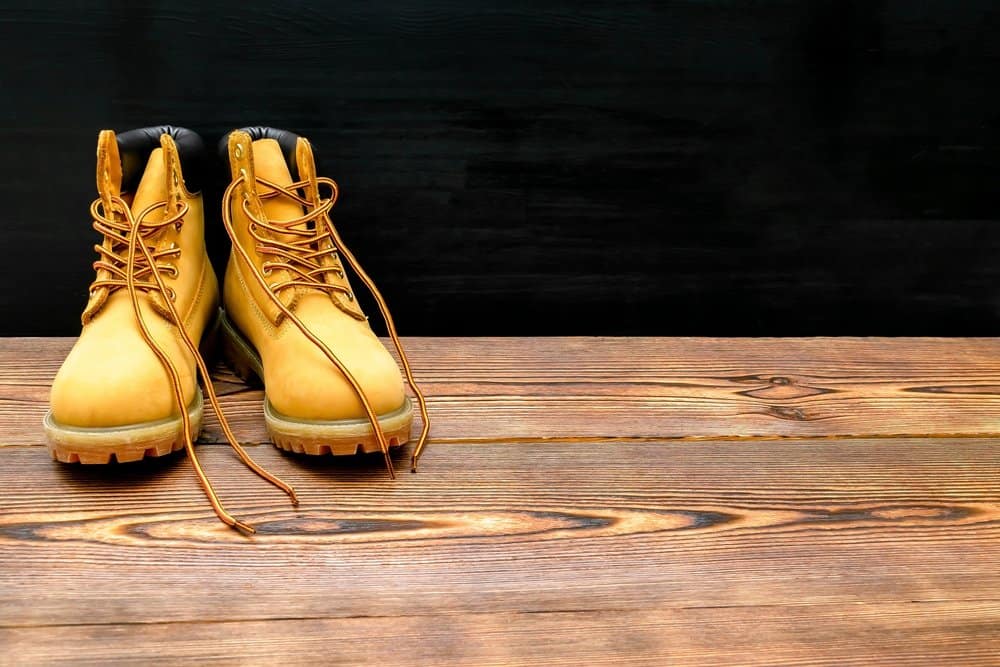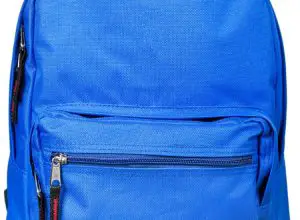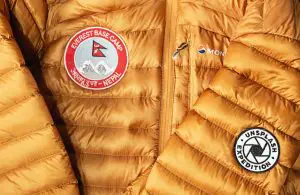The Truth About Hiking in Timberlands (In-Depth Review)

I was born and raised in New York. Where I’m from, Timberlands are iconic. Just like with North Face backpacks, everyone else had em’ and so I always wanted to have a pair.
Timberlands don’t need any introduction – but I’ll make one anyway. They are one of the most popular shoe brands in the world. They are known for their durability, comfort, style, and utility. You can wear them anywhere, and people actually do wear them anywhere.
So, that begs the question. When it comes to hitting the trails, can you go hiking in Timberlands?
Continue reading to find out the pros and cons of hiking in Timberland boots.
Quick Links
Can You Go Hiking in Timberlands?
Short answer, yes. Timberland makes fantastic hiking-specific boots, and we’ll cover a few of them at the end of this article.
Or, if you’d rather skip through to the recommended Timberlands for hiking, click here.
But here’s the reality. When most people think of Timberlands, they think of their classic yellow boots. I’m sure that’s what you were thinking, right? So for the purposes of this article, I’m going to focus on those. And when I mention Timberland boots, I’m referring to the popular classic Yellow Timberlands.
Logically, it makes sense that the classic Timberlands should be okay for hiking. Big, sturdy boots = good for hiking. Unfortunately, it’s not that simple.
The main issue with these Timberland boots is that they are made specifically for urban environments and not for the great outdoors. They simply don’t have the necessary features that make them ideal for hiking.
For example, most Timberland boots don’t have a lot of ankle support. This is obviously a problem because when you’re hiking, you need all the support you can get to avoid rolling your ankle.
When it comes to traction, Timberland boots also fall short. They have a rubber outsole, which does provide some grip. However, the lugs on the bottom of the boot are too small and not deep enough to provide adequate traction on slippery or loose terrain.
Another issue is that Timberland boots are made of leather. This might not seem like a big deal, but it actually is. Leather doesn’t breathe as well as other materials, so your feet are going to sweat a lot more in Timberland boots than they would in, say, mesh hiking shoes.
Timberlands are also heavier than traditional hiking boots, which is not ideal for hiking long distances. But on the plus side, if you do go hiking long distances, you’ll probably build some serious calves.
Why Are Timberlands so Popular?
Just like with North Face backpacks, Timberlands become popular in the early 1990s as a fashion icon.
Originally, Timberlands were designed for workwear and as a utility boot. They were tough, durable, and comfortable – perfect for manual labor.
However, in the 90s, they also became popular with drug dealers in New York who needed a water-proof shoe to stand on the street corner. Eventually, they were seen as more of an “urban” boot and were popular among hip-hop artists and inner-city youth. And soon enough, everyone wanted a pair of Timberlands.
These days, Timberlands are still popular among urbanites but have also gained popularity in the mainstream. Everyone from celebrities to politicians has been seen wearing Timberland boots.
Are Timberland Boots Good for Feet?
On the plus side, Timberlands currently offer one of the best cushioning and foot support amongst boots in the market. Most of them feature an EVA footbed with anti-fatigue technology that provides all-day comfort. They also have a shank for arch support, which is great for people with flat feet or who are on their feet all day.
These boots also have a large-size toe area. This makes them ideal for people with bunions or big toes. The space in the area also helps avoid situations like corns and blisters. This is mainly because the space allows the toes to spread out, minimizing friction and pressure.
However, let’s dive a bit deeper into the pros & cons, and you can decide for yourself if classic Timberlands are right for you.

Pros of Hiking in Timberland Boots
1. They’re Incredibly Durable
One of the things that Timberland is known for is the durability of its products. Their boots are no different. The leather is tough and can take a beating. This makes them ideal for certain hiking scenarios because they can withstand a lot of wear and tear.
2. They’re Waterproof
Another advantage of Timberland boots is that they’re waterproof. This is obviously a huge plus when you’re hiking in the rain or through puddles. You don’t have to worry about your feet getting wet and cold.
3. They’re Comfortable
Timberland boots are also quite comfortable. This is thanks to the EVA footbed and arch support that we mentioned earlier. These features make Timberland boots ideal for people who are on their feet all day – which is what they were made for in the first place.
4. They Look Good
Let’s be honest – Timberland boots look good. They have a certain ruggedness and style that is difficult to find in other boots. This makes them popular not only for hiking but also for everyday wear.
5. Versatility
On that note, Timberlands are also one of the most versatile shoes in the market. You can wear your Timberlands on the trail, and then wear them into town for lunch. Traditional hiking boots usually can’t pull that off.
Cons of Hiking in Timberland Boots
1. They’re Heavy
The main downside of Timberland boots is that they’re heavy. This can be a major issue when you’re hiking long distances. The extra weight can quickly wear you out and make your hike more difficult than it needs to be.
2. They’re Not Breathable
Another downside of Timberland boots is that they’re not very breathable. This means that your feet are going to sweat a lot when you wear them. This can be uncomfortable and can lead to blisters. If you’re a hiker that likes to double up on socks, hiking in Timberlands can get very unpleasant, quickly.
3. They’re Not Cheap
Timberland boots are also not cheap. This is especially true if you buy them new. You can find Timberland boots on sale, but they’re still going to be more expensive than other hiking boots. A new pair of the classic Yellow Timberland Boots will run you up to $180.
4. More Aesthetic, Less Functional
Although they have a few great features such as durability and being water-proof, some people say that the Timberland boots are more style over substance. Again, they are beautiful boots, and while you can wear them for short hikes, they are less functional for hiking longer trails.
5. Break-In Period
Another downside of Timberland boots is that they can take a while to break in. This means that the boots might be uncomfortable at first. However, once you break them in, they should be much more comfortable. So while this is more of a temporary issue, it’s still something that many find a bit annoying about these boots. We’ll also cover ways to break them in faster below.
6. Less Flexible
Lastly, the worst part of hiking with these boots is that they are firm as a rock. (Which, don’t get me wrong, that’s a great thing to have – if you weren’t hiking.) The leather quality utilized in the boot makes them firmer and less flexible. While this is designed to assist the ankle and heels, it restricts the ability to hike through uneven and rough terrain.
Are Timberland Boots Waterproof?
So how waterproof are Timberlands, anyway?
The leather in TImberland boots is actually injected with silicone. What this means is while there isn’t a waterproof coating on the outside, water will not be able to through your shoe on the inside. At all.
They are also seam-sealed, so water will not be able to enter through the stitching either.
The bottom line is that Timberland boots are waterproof, and you don’t have to worry about your feet getting wet when you’re hiking in the rain or through puddles.
So unlike other boots that claim to be waterproof and are just water-resistant – Timberland boots will actually keep your feet dry.
How to Break in Timberland Boots for hiking?
There are a few things you can do to help break in your Timberland boots if you plan on hiking with them.
The first thing you can do is to wear them around the house. This will help stretch out the leather and make them more comfortable. Another thing you can do is to wear thick socks when you first put them on. This will help stretch out the leather even more. Finally, you can try using a boot stretcher. This is a tool that you insert into the boot to help stretch it out. If you follow these steps, you should be able to break in your Timberland boots and make them more comfortable for hiking.
Best Timberland Boots for Hiking
Personally, I wouldn’t recommend the Classic Yellow Boots for hiking anything other than flat and short trails. But although they may not be an ideal choice for hiking, there are other Timberland boots suitable for hikers. Below are some of the best Timberland boots ideal for hiking both long and short distances:
White Ledge Mid Waterproof Hiking Boots

Probably the most popular hiking boot that Timberland offers, the White Ledge is a great choice for those looking for a lightweight and comfortable boot. It has a waterproof leather upper, seam-sealed waterproof leather, and rubber outsoles with multi-directional lugs for various types of terrain. The Timberland White Ledge is also available in a wide width for those who need it.
Mt. Maddsen

The Timberland Mt. Maddsen is another excellent choice for those looking for a Timberland hiking boot. It has a waterproof leather and mesh upper, anti-fatigue removable footbed, a compression-molded EVA midsole, and a fully gusseted tongue.
If you don’t know what a gusseted tongue is, it’s a boot tongue that’s attached to the boot on both sides. This prevents debris from getting into your boot and also helps keep your feet dry.
Flume Waterproof Hiking Boots

The Flume boots are also fully waterproof and have a fully gusseted tongue, an EVA footbed, and a multi-directional lug outsole as well. The only difference between the Flume and the White Ledge is that the Flume is slightly smaller. So if you’re looking for a boot with a little less bulk, the Flume might be a better choice.
There you have it! These are the best Timberland boots for hiking, in my opinion. If you’re looking for a lightweight and comfortable boot that will keep your feet dry, I would recommend the White Ledge or Flume. If you’re looking for a boot with a little more support, I would recommend the Mt. Maddsen.
Conclusion
There are specially designed Timberlands made for hiking that have all the features you need to make your hike more enjoyable. If you’re planning on going hiking with the popular yellow boots, I would recommend against it.
But if you choose the right Timberland hiking boot, you’ll be sure to have a comfortable and enjoyable hike. Do you have a pair of Timberland boots? What’s your favorite style? Let us know in the comments below!






